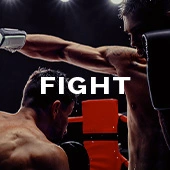LAS VEGAS - And that is that. An embrace inside the ring between rivals Canelo Alvarez and Gennadiy Golovkin ended 36 rounds of a tumultuous rivalry.
September 17, 2022 marked the end of an interesting trilogy between the two rivals.
Undisputed super middleweight champion Canelo Alvarez dominated and outboxed Gennadiy Golovkin over 12 one-sided rounds before a partisan and sold-out crowd at the T-Mobile Arena.
It was unfortunate that the scorecards (115-113, 115-113, and 116-112) did not anywhere near reflect how the fight played out. The fight was dull, Golovkin looked very much like a fighter past his prime, where he sometimes pulled the trigger during exchanges, and Alvarez revealed at the post-fight press conference he would likely need surgery to his hand due to an injury.
Even though Alvarez officially won two of the three fights, detractors will point out Golovkin did enough to win the previous two fights.
Tonight’s fight and outcome put an end to a trilogy that did not live up to other famous trilogies, such as Israel Vazquez-Rafael Marquez, Arturo Gatti-Mickey Ward, just to name a few. Instead, the trilogy between Alvarez and Golovin is best known for the scorecards in the first two fights.
In their first fight, which took place in September 2017, Alvarez and Golovkin fought to a split-decision draw. Much of the criticism fell on the shoulders of judge Adelaide Byrd, who had the infamous scorecard of 118-110 for Alvarez. But as boxing scribe Gayle Lynn Falkenthal pointed out, why put the blame solely on Byrd when judge Don Trella produced a 114-114 scorecard? Even if Byrd did have that ridiculous scorecard, had Trella scored one round for Golovkin as opposed to Alvarez, Golovkin would have won a split-decision.
One year later, in the highly-anticipated rematch, the last half of the fight produced fireworks between both fighters, with Alvarez winning by majority decision. The fight was very close. A 115-113 scorecard for either fighter, along with the 114-114 scorecard, reflected how competitive and close the fight was.
The Alvarez-Golovkin fight could have and should have been immediately fought in May 2019. Instead, Alvarez made it very clear that he did not want the third fight with Golovkin. Instead, he fought Daniel Jacobs in a middleweight unification fight.
Other opportunities could have led to the third fight taking place, but the COVID-19 pandemic appeared, shutting down major fight cards for several weeks. As fight cards began to take place, Alvarez sued Oscar De La Hoya and Golden Boy Promotions, along with DAZN. Alvarez would again fight on Matchroom Boxing and Premier Boxing Champions (PBC) cards.
Despite moving up in weight and is still the current top middleweight in the sport, owning two world title belts, Golovkin is on the downside of his career. At 40, his reflexes are not what they used to be. Even in defeat, Golovkin still owns two world middleweight title belts.
According to BoxingScene’s Keith Idec, Golovkin’s purse for the third fight against Alvarez, including ticket and pay-per-view sales, could be over $40 million. There is no need for him to fight again. He does have until later this week (September 23) to notify the WBA whether he will indeed defend his Super world title belt against Erislandy, the ‘Regular’ titleholder. Should Golovkin decide to vacate the WBA title, Lara would be elevated to ‘Super’ world titleholder.
As for Alvarez, the plan was to face WBA world light heavyweight titleholder Dmitry Bivol in a rematch from their May 7 clash, which Bivol won by unanimous decision. That will depend if Bivol will be able to get past mandatory challenger Gilberto Ramirez of Mexico on November 5. That would also depend on how fast Alvarez is able to recuperate from surgery to his injured hand.
Alvarez and Golovkin brought out the best in each other. Regardless of who they will face in the future, how many more world title belts they will win, or when they will finally hang up their gloves for good, they will always be aligned with each other, just not for the reasons people think. Seeing them acknowledge one another after the fight showed the respect each has for one another despite the insults each would throw at one another in press conferences, commercials, and social media.
Their second fight was the best in the trilogy and showed their ‘A’ game in a spirited effort that could have gone either way.
A terrible scorecard in the first fight, a long wait between the second and third fights, and boxing politics (what else is new) prevented this trilogy from being memorable inside the ring rather than outside of it.
Francisco A. Salazar has written for BoxingScene since September 2012 and has covered boxing in Southern California and abroad since 2000. Francisco also covers boxing for the Ventura County (California) Star newspaper. He can be reached by email at santio89@yahoo.com or on Twitter at FSalazarBoxing


